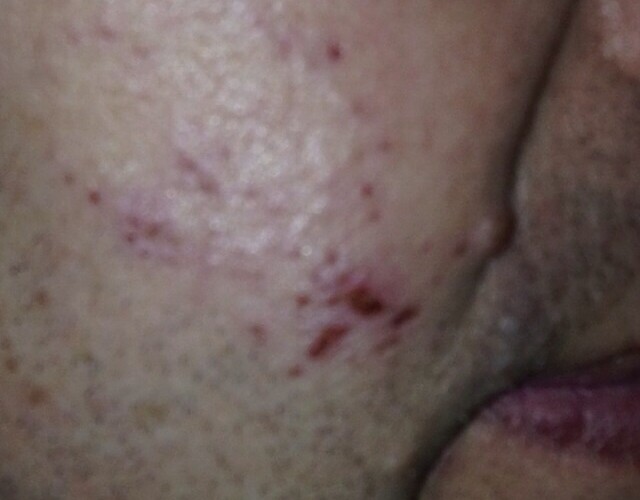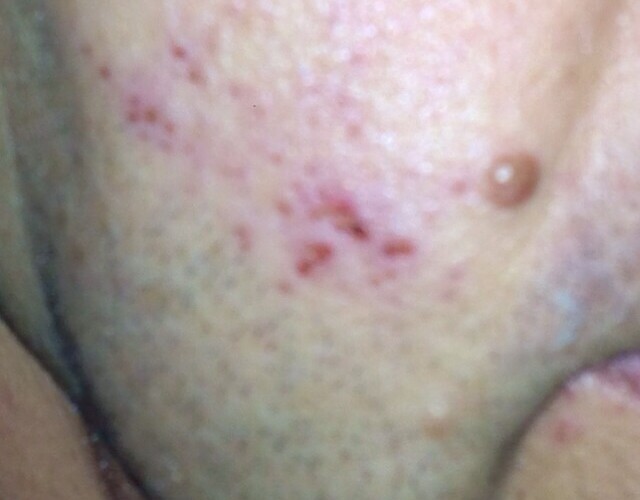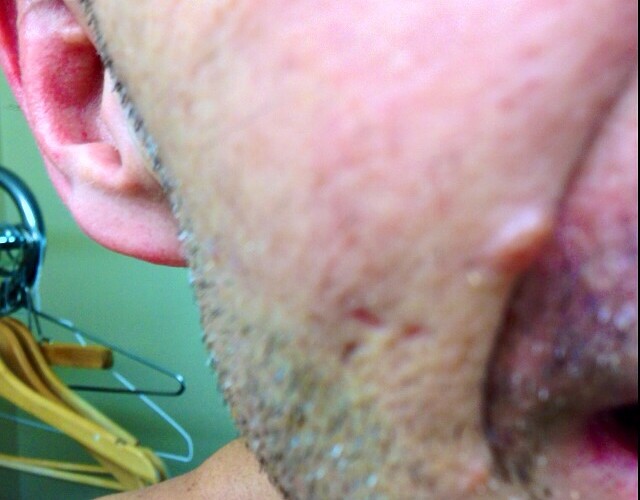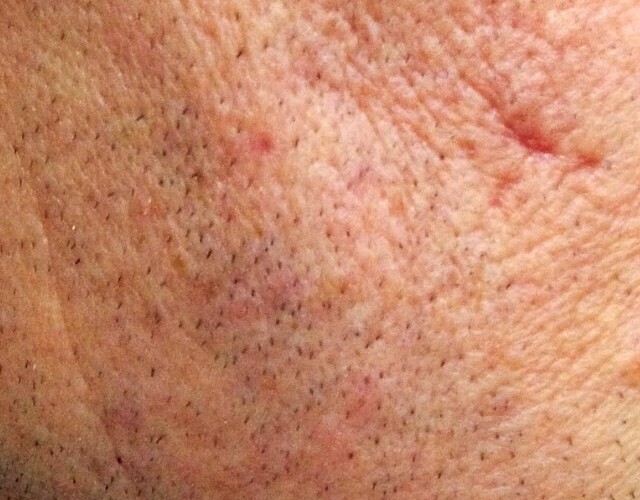I’m, as usual, speaking to a larger issue than this particular case.
Whenever a client presents anything, the observer (my opinion) should go through a checklist in his/her mind. The reaction of, “Oh my God, this is horrible; never go to this person again,” should be the very last in the series of thoughts. (Not that it’s not appropriate in this particular case, but that’s not the point I’m trying to make. And, I’m not “picking on you” … far from it; I’m super happy for your comments so that I may voice an opinion. And yes, I was waiting for such an opportunity!)
Our questions should be in this order:
-
WHAT IS the lesion?
(Photos can deceive, so questioning the patient is in order. I would ask when the injury took place: how long ago it happened? I would also ask the duration of the treatment. Perhaps what the patient did afterward or what was put on the skin. There’s a big difference in, say, a bruise or a burn.)
-
What remedies can be taken to minimize the immediate difficulty and the long-term outcome?
(I would not instantly recommend products to slather on the skin, until I was fairly certain of “what the lesion is!” There are instances when aloe would suffice, and other times when actual medication is appropriate. If there’s a serious infection, you need more than simple remedies.)
In this "declared case of the bleeding,” (and I don’t doubt the guy) we do not know the frequency of this occurrence. Was this happening all the time, over-and-over? Did she have to wipe away blood from a missed insertion, or maybe she simply removed a pimple in the area? Did the patient have a conversation with the operator? What did she say?
My very last comment would be condemnation of the operator (not that that’s not necessary at times). However, overall I see this “rush to judgment” WAY too often here on Hairtell … and that may be one good reason why few practitioners are willing to post anything here or showcase their work. (And I WANT to see more photos of all of it … from everybody! The good, the bad, the ugly and the successful.)
BTW the same goes for laser work too. Post-treatment photos do not necessarily indicate bad work and do not therefore warrant denunciation.
Well, I’m going to (attempt) to change all that. Now, I’m going to post all my “horror stories” and how the skin looks immediately after a treatment! So, hold onto your butts! (I might do this clandestinely to “throw you off.”)
Why do I care?
Well, from my perspective, “overtreatment” is not the problem with electrolysis in general; it’s UNDER-treatment! Yeah, a patient that spends hundreds of wasted hours on electrolysis, or spend “decades” doing electrolysis … and gets minimal results. My belief is that FEAR of overtreating the skin causes sub-standard treatment.
Not to put too fine a point on all this, but I have to wonder why I get virtually no clients from Southern California … but MANY clients willing to make the trip “over the pond” to see me!



